As a horse owner, choosing the right rug or blanket for your horse is essential for their health and well-being.
Horse rugs and blankets protect horses from the elements, help regulate their body temperature, prevent injuries, and keep them comfortable. With so many types of horse rugs and horse blankets available on the market, it can be overwhelming to choose the right one.
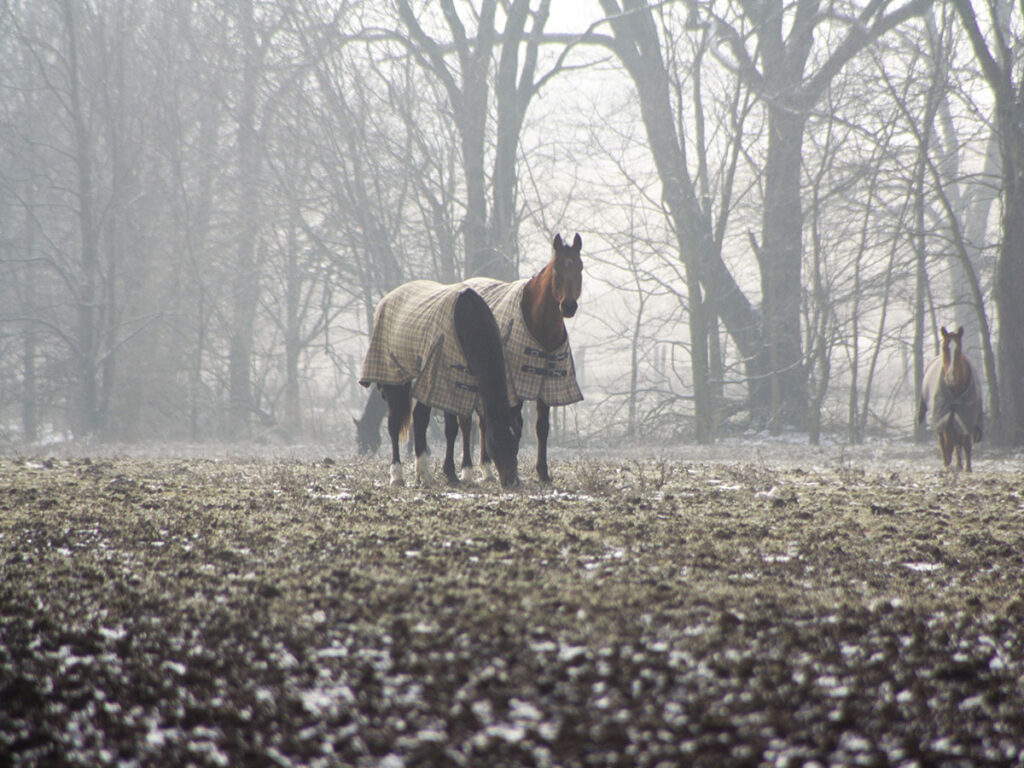
In this article, we’ll explore the different types of horse rugs and horse blankets, the materials used in them, and the different factors to consider when choosing the right one for your horse.
Whether you’re a seasoned equestrian or a first-time horse owner, this article will help you make an informed decision and keep your horse healthy and happy.
Types of Horse Rugs and Blankets
Horse rugs and blankets come in different types, each with unique features and purposes. Understanding the different types of horse rugs and blankets can help you choose the right one for your horse’s needs.
Here are some of the most common types of horse rugs and blankets:
- Stable rugs: As the name suggests, stable rugs are designed to be worn inside the stable. They are made of warm and breathable materials, such as fleece or wool, and are designed to keep horses warm during colder months. Stable rugs come in different weights, ranging from lightweight to heavy, depending on the temperature.
- Turnout rugs: Turnout rugs are designed to be worn outside the stable, mainly during turnout. They are made of waterproof and breathable materials, such as nylon or polyester, to protect horses from rain and snow. Turnout rugs also come in different weights, depending on the temperature.
- Cooler rugs: Cooler rugs are used to cool down horses after exercise or during transport. They are made of lightweight and breathable materials, such as cotton or mesh, to allow moisture to evaporate quickly.
- Fly rugs: Fly rugs are designed to protect horses from insects and flies during turnout. They are made of lightweight and breathable materials, such as mesh, and usually come with built-in neck covers and belly flaps.
- Summer sheets: Summer sheets are lightweight and breathable rugs that offer a little protection from the sun and insects. They are made of cotton or mesh materials and are ideal for use during hot summer days.
When choosing a horse rug or blanket, consider the purpose and features of each type. For instance, if your horse is turned out during the day, a turnout rug would be the best option, while a cooler rug would be ideal after exercise.

Materials Used in Horse Rugs and Blankets
The materials used in horse rugs and blankets play a significant role in their performance and durability. Understanding the different materials used in horse rugs and blankets can help you make an informed decision when choosing the right one for your horse.
Here are some of the most common materials used in horse rugs and blankets:
- Mesh: Mesh is a lightweight and breathable material that allows air to flow freely through the rug or blanket. Mesh rugs are ideal for use during hot weather and are perfect for horses that are turned out during the day. However, mesh rugs may not provide enough warmth during colder weather.
- Cotton: Cotton is a natural material that is soft, breathable, and durable. Cotton rugs are ideal for use during the summer months and can be layered with other rugs during colder weather. Cotton is also easy to wash and maintain.
- Synthetic materials: Synthetic materials, such as nylon and polyester, are commonly used in turnout rugs and stable rugs. These materials are waterproof and durable, making them ideal for use during wet and cold weather. However, synthetic materials may not be as breathable as natural materials, which may cause horses to sweat.
When choosing a horse rug or blanket, consider the material used and its pros and cons. For instance, if you need a rug that can withstand wet and cold weather, a synthetic material rug would be the best option. If you’re looking for a breathable rug that can be used during hot weather, a mesh or cotton rug would be ideal.
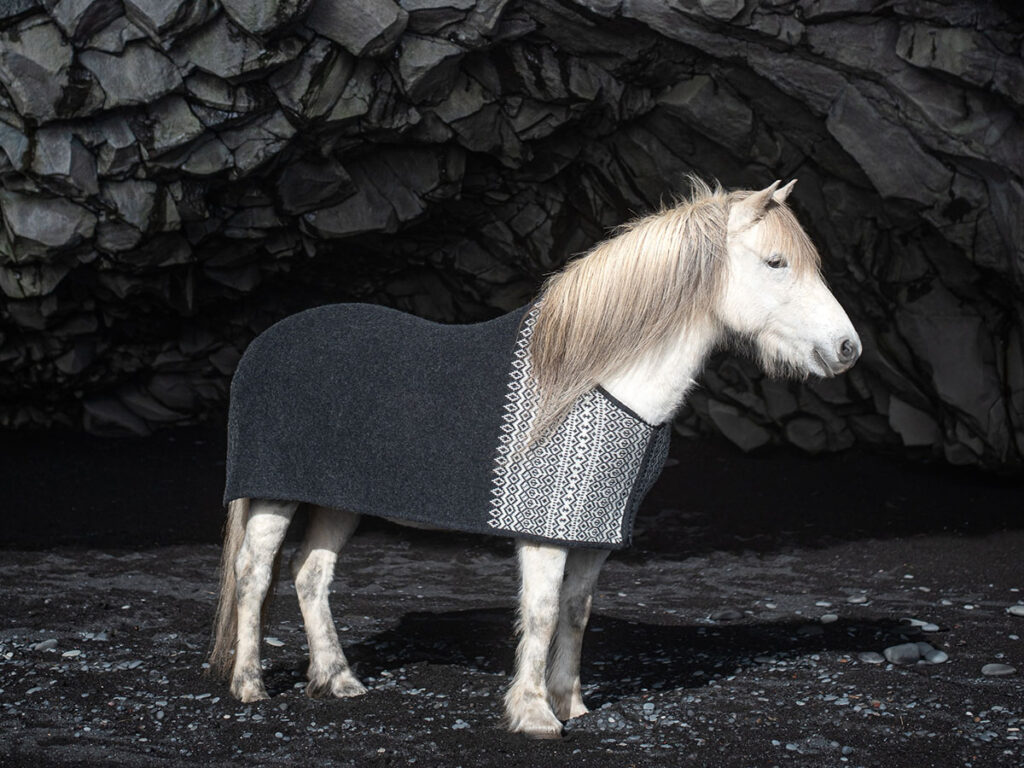
Denier, Grams, and Weights in Horse Rugs and Blankets
Choosing the right horse rug or blanket, and understanding the technical terms like denier, grams, and weights is crucial. These terms determine the performance and durability of a horse rug or blanket.
Denier refers to the thickness of the threads used in the fabric. A higher denier count indicates a stronger and more durable fabric. For example, a 600 denier fabric is thicker and more durable than a 1200 denier fabric.
Grams refer to the weight of the filling used in the rug or blanket. The higher the grams, the warmer the rug or blanket will be. The appropriate grams for your horse’s rug or blanket depend on the climate and temperature in your area.
Weights in horse rugs and blankets refer to the overall weight of the rug or blanket, including the fabric and filling. A heavier rug or blanket is generally warmer but may be too heavy for certain climates.
Always consider these factors when choosing the right horse rug or blanket for your horse. For example, a 600 denier turnout rug with 200 grams of filling may be suitable for a mild winter climate, while a 1200 denier stable rug with 300 grams of filling may be better suited for a harsher winter climate.
It’s also important to note that the denier, grams, and weight of a horse rug or blanket should be appropriate for your horse’s size and breed. A larger horse may need a heavier rug or blanket compared to a smaller horse, while a heavily feathered horse may require a rug or blanket with a higher denier count to prevent tearing.
In summary, understanding deniers, grams, and weights is vital for choosing the right horse rug or blanket that provides the appropriate level of warmth, durability, and protection for your horse.

How Many Rugs Does a Horse Need?
As horse owners, one of our responsibilities is to ensure the comfort and well-being of our equine companions. One of the ways we can do this is by providing them with the appropriate horse rugs and blankets.
But how many rugs does a horse need? The answer depends on several factors, which we will discuss in this section.
Factors to Consider
Climate and Temperature
- The climate and temperature in your area are the most important factors to consider when deciding how many rugs your horse needs. If you live in a cold climate, you may need to provide your horse with more rugs to keep them warm. If you live in a warmer climate, you may only need to use rugs occasionally.
Humidity
- Humidity also plays a role in determining how many rugs your horse needs. If the air is damp, your horse may need more rugs to stay warm and dry.
Activity level
- The activity level of your horse also affects how many rugs they need. More active horses generate more body heat and may not need as many rugs as horses that are more sedentary.
Hair length and thickness
- The length and thickness of your horse’s coat also play a role in determining how many rugs they need. Horses with thin or short coats may need more rugs to stay warm, while horses with thick, long coats may not need as many rugs.
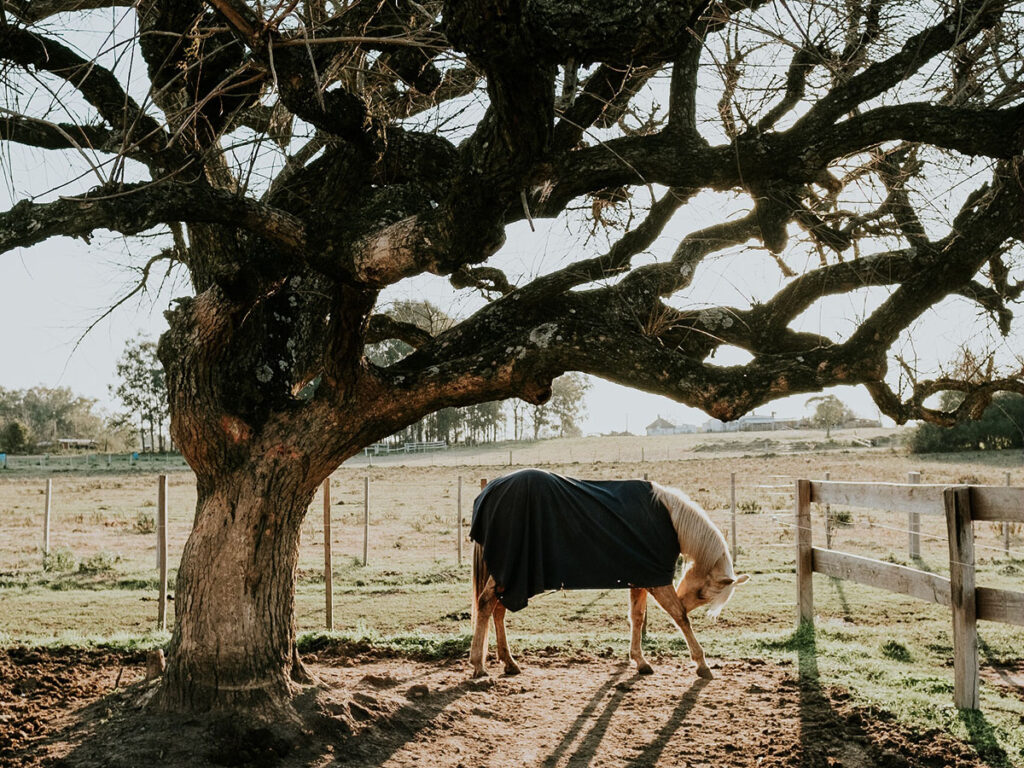
Guidelines for Choosing the Right Number of Rugs
Stable Horses
- For horses that spend most of their time in the stable, one or two rugs may be sufficient. A stable rug can be used to keep the horse warm during colder temperatures, while a cooler rug can be used after exercise or during milder temperatures.
Turnout Horses
- Horses that spend time outdoors may need more rugs to protect them from the elements. A turnout rug can be used to keep the horse warm and dry during colder or wetter weather. Additionally, a fly rug can be used to protect horses from insects during warmer weather.
Clipping
- If your horse has been clipped, they may need more rugs to stay warm. Clipped horses have less natural insulation and are more susceptible to the cold.
Recommendations for Different Situations
Cold and Dry Weather
- In cold and dry weather, it is recommended to use a heavyweight turnout rug or a combo rug with a detachable neck cover. Additionally, a stable rug can be used in the stable to provide extra warmth.
Wet and Humid Weather
- In wet and humid weather, it is recommended to use a breathable waterproof turnout rug. A cooler rug can also be used to wick away moisture after exercise.
In-between Weather
- During milder weather, a lightweight or medium-weight turnout rug may be sufficient. A cooler rug can be used after exercise to prevent the horse from getting too cold.
Very Cold Weather
- In very cold weather, a heavyweight combo rug with a detachable neck cover is recommended. Additionally, a stable rug can be used in the stable to provide extra warmth.
Additional Tips for Rug Management
Regular Inspection
- It is important to inspect your horse’s rugs regularly for any signs of wear or damage. This will help you identify any issues before they become a bigger problem.
Proper Cleaning
- Rugs should be washed regularly to keep them clean and hygienic. Follow the manufacturer’s instructions for cleaning and avoid using harsh detergents.
Repair and Replacement
- If your horse’s rugs are damaged, they should be repaired or replaced promptly to prevent further damage or discomfort to the horse.
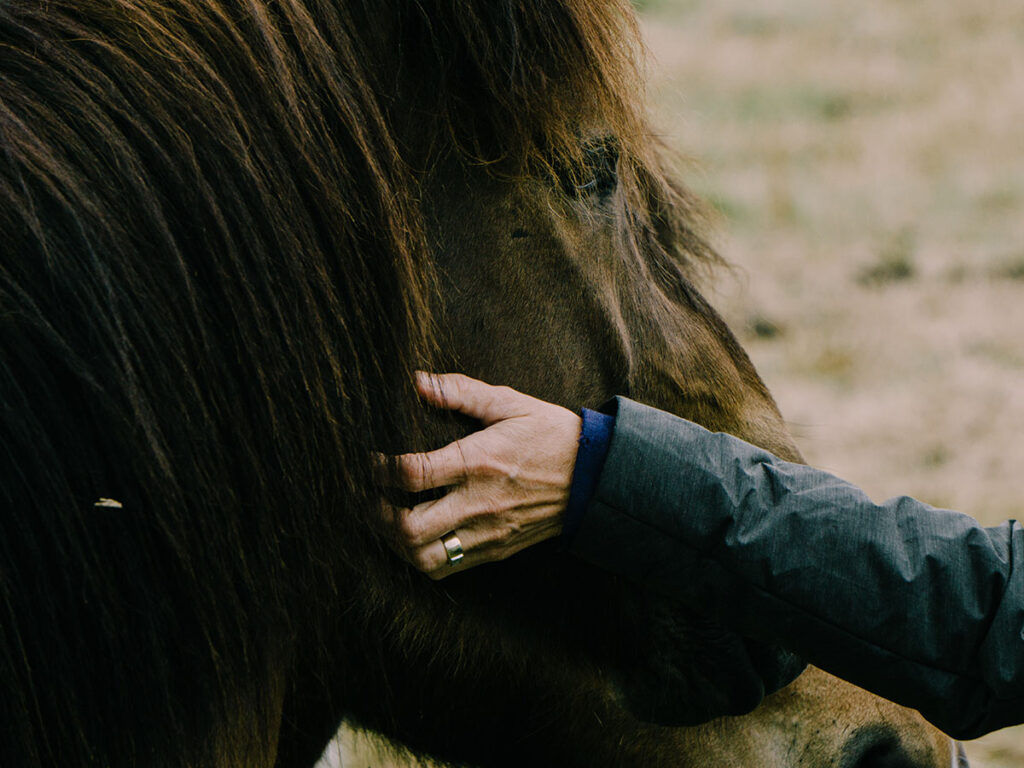
Do Stabled Horses Need Rugs?
Stabled horses are kept in indoor stables where the temperature and climate are relatively consistent. As a result, the need for a rug may not be immediately apparent.
However, there are situations where stabled horses may benefit from the use of a rug. In this section, we will discuss the pros and cons of using rugs on stabled horses, and provide guidelines on when and how to use rugs on stabled horses.
Pros and Cons of Using Rugs on Stabled Horses
Pros:
- Extra warmth and protection from cold drafts and temperature drops.
- Maintain coat condition and prevent coat damage from rubbing against surfaces.
- Prevent skin irritations and infections caused by dampness or sweat.
- Provide additional cushioning and support for horses with joint or muscle issues.
Cons:
- Overheating can occur if the rug is not removed during periods of mild weather or if the horse is too active.
- Horses may become too reliant on the rug and have difficulty adjusting to varying temperatures.
- Poorly fitting or dirty rugs can cause skin irritations and infections.
- Costly to purchase and maintain.
Guidelines on When and How to Use Rugs on Stabled Horses
- Consider the temperature and climate inside the stable. If the stable is well-insulated and the temperature is consistent, the need for a rug may be minimal. However, if the temperature drops or there are cold drafts, a rug may be necessary.
- Monitor the horse’s behaviour and physical condition. If the horse is shivering or appears uncomfortable, a rug may be necessary. Additionally, if the horse’s coat is showing signs of damage from rubbing against surfaces, a rug may be necessary to prevent further damage.
- Choose a rug that is appropriate for the temperature and climate. A lightweight rug may be sufficient for mild temperatures, while a heavyweight rug may be necessary for colder temperatures.
- Ensure the rug fits properly and is clean. Poorly fitting or dirty rugs can cause skin irritations and infections.
- Remove the rug during periods of mild weather or if the horse becomes too active. Overheating can occur if the horse is wearing a rug when it is not necessary.
While stabled horses may not require rugs as frequently as turnout horses, there are situations where a rug may be necessary to provide extra warmth, protect the coat, and prevent skin irritations.
It is wise to monitor the temperature and climate inside the stable, as well as the horse’s behaviour and physical condition, to determine when and how to use rugs on stabled horses.
Proper fitting, cleanliness, and removal during mild weather or activity are also factors to consider.
Choosing the right horse rug or blanket is crucial for a horse’s health and well-being. With so many varying types of horse rugs and blankets on the market, it can be overwhelming to know which one to choose.
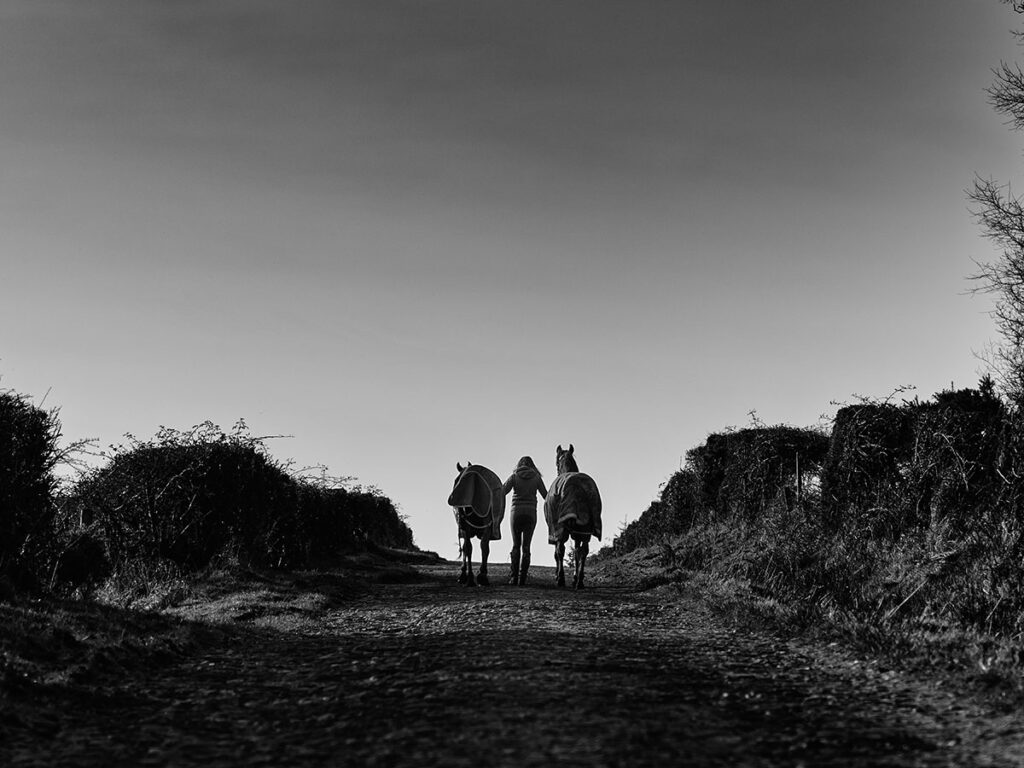
In conclusion, choosing the right horse rug or blanket is crucial for a horse’s health and well-being. The different types of horse rugs and blankets, materials used, and denier, grams, and weights all play a role in the performance and durability of a horse rug or blanket.
When deciding how many rugs a horse needs, it is vital to consider factors such as climate and temperature, humidity, activity level, and hair length and thickness.
Remember to consider the needs of your horse when choosing a rug or blanket. It is beneficial to consult with a veterinarian or equine specialist for any specific recommendations based on your horse’s health and lifestyle.
We hope this article has provided helpful insights and recommendations for choosing the right horse rug or blanket. We encourage our readers to share their thoughts and experiences in the comments below.




